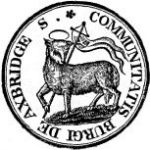HIDDEN WEDMORE
On Wednesday 19th April Hazel Hudson described to us some of the many discoveries in the field of archaeology and local history that have taken place in the parish of Wedmore. She herself has been involved in and often instrumental in the discovery of many of them since her first encounter with archaeology as a sixth former at Sexey’s Grammar School, Blackford in the 1950s. However, taking a chronological theme, she began her talk with the discovery in 1893 of dinosaur bones in the late Triassic deposits being quarried on the hill top close to the Mudgley Road. These bones proved to be unique in that they predate the more well known dinosaurs of the Jurassic and also in that they represent two dinosaurs that have not, as yet, been identified anywhere else in the world. They have been named Avalonia sanfordia and Picrodon herveyi after the men who discovered them. These bones are now on display in Taunton Museum and must surely be worth a visit.
Following this, Hazel described the discovery at Heath House of a variety of artefacts – two Bronze Age Palstaves, three Bronze Age torques and a number of amber beads. The last of these, the beads, must have come from the Baltic. Moving into the Neolithic, a trackway across the levels has been found near Blakeway Farm and this trackway c. 2500BC, made of hazel rods, shows the first evidence of coppicing yet to be identified in the country.
More than twenty sites have been located from the Roman period and Roman field patterns have been observed on the levels between the Isle of Wedmore and the Mendip Hills. Roman salt pans with their accompanying briquetage have also been found in the Westhay Moor area to the south of the Isle of Wedmore.
Evidence of the Saxon period is less clear but in 1853 Tucker Coles discovered a Saxon pot in St Mary’s church yard containing over two hundred silver pennies. Declared treasure trove, most are now in the British Museum but a small number can be found in Taunton Museum. The coins were minted in Lincoln and have been attributed to the reign of King Canute. In 1989, a Saxon ring dated to 5-600 AD was also discovered near the Cheddar Road. The ring consisted of strands of copper alloy wire twisted together. Hazel has a copy which she wears regularly but the design is so charming that gold copies are now made in Wedmore.
Moving to the Norman period, the area seems to have been favoured by the church hierarchy. The site of a Bishop’s Palace has been located and excavated in Blackford and it has been suggested that it was demolished in the late 1300s because it was thought to have been too sumptuous. A grand religious establishment has also been found at Court Garden in Mudgley. First recorded in 1176, it is believed to have been built in the 1100s and to have belonged to the Dean of Wells. Pottery has been found on the site from the twelfth through to the fifteenth centuries. A piece of slate has been found that has musical notation inscribed on it, possibly dating from the 1400s. Is this another first for the area, I wonder?
Other exciting locations include Fernhall Farm, Mudgley, which has shown evidence of occupation from the Mesolithic through to the Present Day and the Old Vicarage, Wedmore, with evidence from the Roman Period onwards. Gog’s Orchard, Wedmore, has produced evidence dating back to the Iron Age including a Roman burial from the 2nd or 3rd century with, as a result, the need for the housing development there to be built on concrete rafts to preserve the archaeology beneath.
Finally, Hazel described a number of details about St. Mary’s Church, Wedmore, many of which had been first noted by Jerry Sampson. She concluded her talk with the observation that the site of the Manor House next to the church was most probably the location of King Alfred’s court in Saxon times.
But, perhaps our own thoughts at the end of her talk must have been to wonder at the extent of Hidden Wedmore that she had revealed to us and to speculate on the excitement and fun that she must have had over the years in helping to uncover it.
Madeleine Roberts
